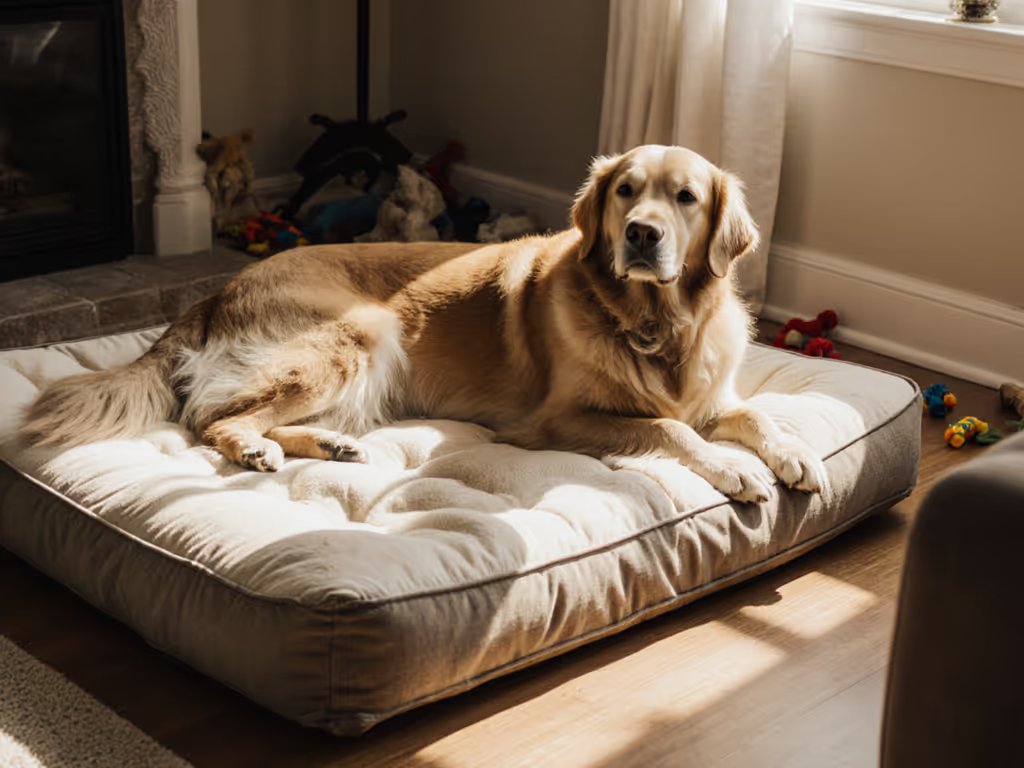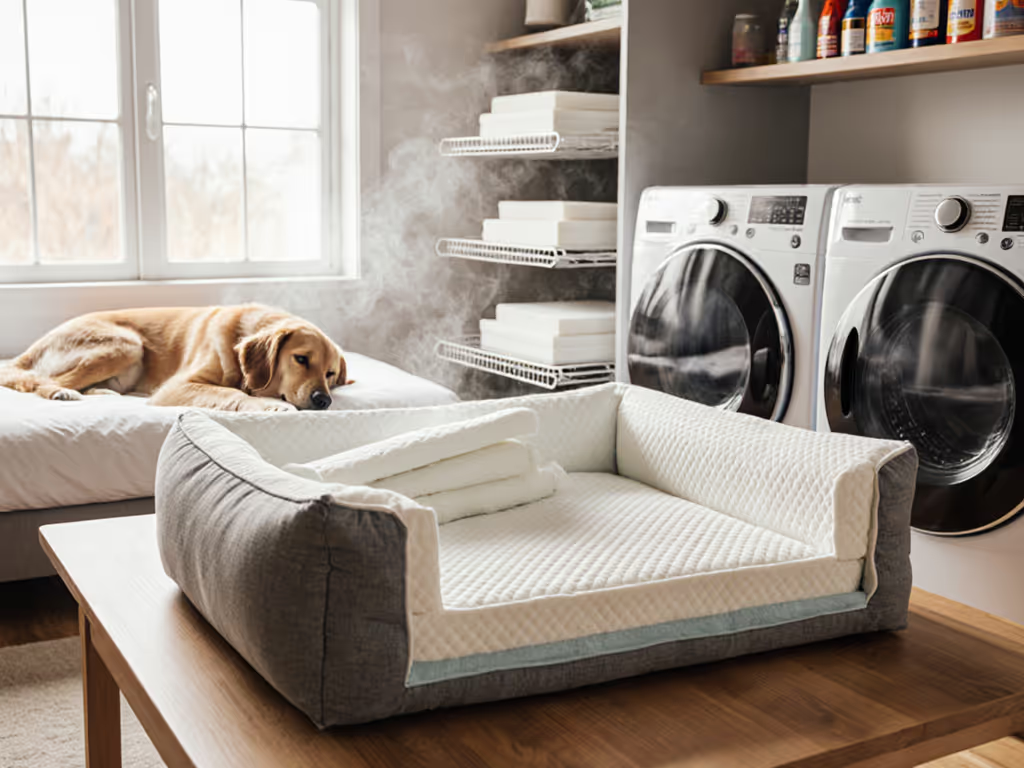
Dog Bed Size Chart: Measure Nose to Tail for Perfect Fit
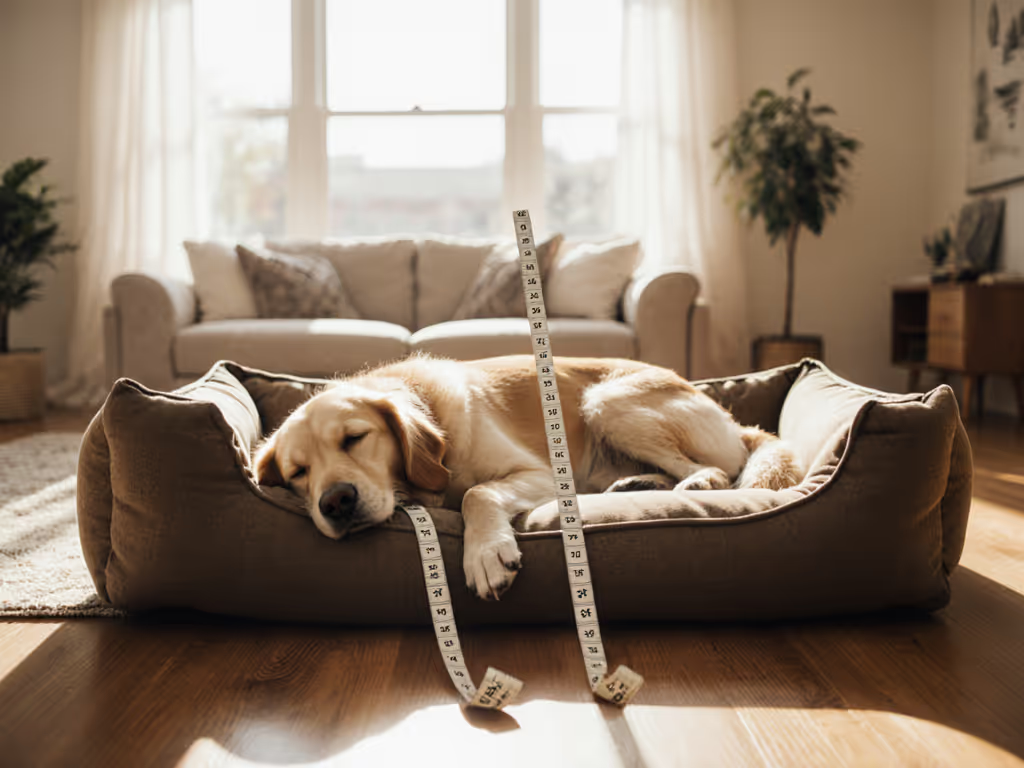
When that new dog bed size chart lands in your inbox or appears on a retailer's site, it's tempting to jump straight to your dog's breed category. But as I've learned fostering over 30 senior dogs with sensitive joints, true comfort starts with alignment and temperature balance, not just plushness. How to measure a dog for a bed properly reveals why so many expensive beds get ignored: they're sized by marketing, not by your dog's actual sleeping posture. Fostering a 12-year-old shepherd taught me softness isn't support (he woke stiff) until I matched his side-sleeper curl to a properly sized, medium-firm bed that kept him cooler. That's when I realized the most critical measurement isn't on any label. It's nose to base of tail while your dog is asleep in their natural position.
Real comfort starts with alignment, then temperature and texture.
Why Breed-Based Sizing Fails
Most pet parents reach for breed size charts first, but these are rough estimates at best. A "medium" French Bulldog might need a Small bed while another requires Large, depending on whether they sprawl like a starfish or curl tightly. Breed-based sizing ignores three critical factors:
- Sleep style variance: A Goldendoodle could be a burrower (needing extra depth) or a sprawler (requiring width beyond nose-to-tail length)
- Age-related changes: Senior dogs often stretch out more as joints stiffen, needing 4-6" more length than their prime years
- Bolster impact: High walls that look supportive can reduce usable sleeping space by 30-50%, especially for shorter breeds
Watch the sleep, not the label.
When measuring your dog, consider their actual sleeping posture, not how they stand. I've seen German Shepherds who sleep in perfect C-shapes (needing less length) and Chihuahuas who stretch fully flat (requiring more). Data from orthopedic veterinarians shows that beds restricting natural sleeping postures increase pressure points by up to 40%, which explains why so many dogs reject even expensive orthopedic beds.
Gentle, Precise Measurement Technique
The frustration of an ill-fitting bed starts with inaccurate measuring. Follow these temperature-aware steps:
Step 1: Catch Them Asleep
Measure when your dog is already sleeping deeply. Trying to measure a wakeful dog creates tension that alters their natural posture. Look for relaxed limbs and steady breathing, this reveals their true sleeping dimensions. Note if they're curling, sprawling, or leaning against something (a sign they need bolster support).
Step 2: Nose-to-Tail Methodology
Using a soft tape measure:
- Start at nose tip (not forehead)
- Follow the curve of their spine
- End at base of tail (where tail meets body)
- Add 2-4" for "wiggle room" (more for active sleepers)
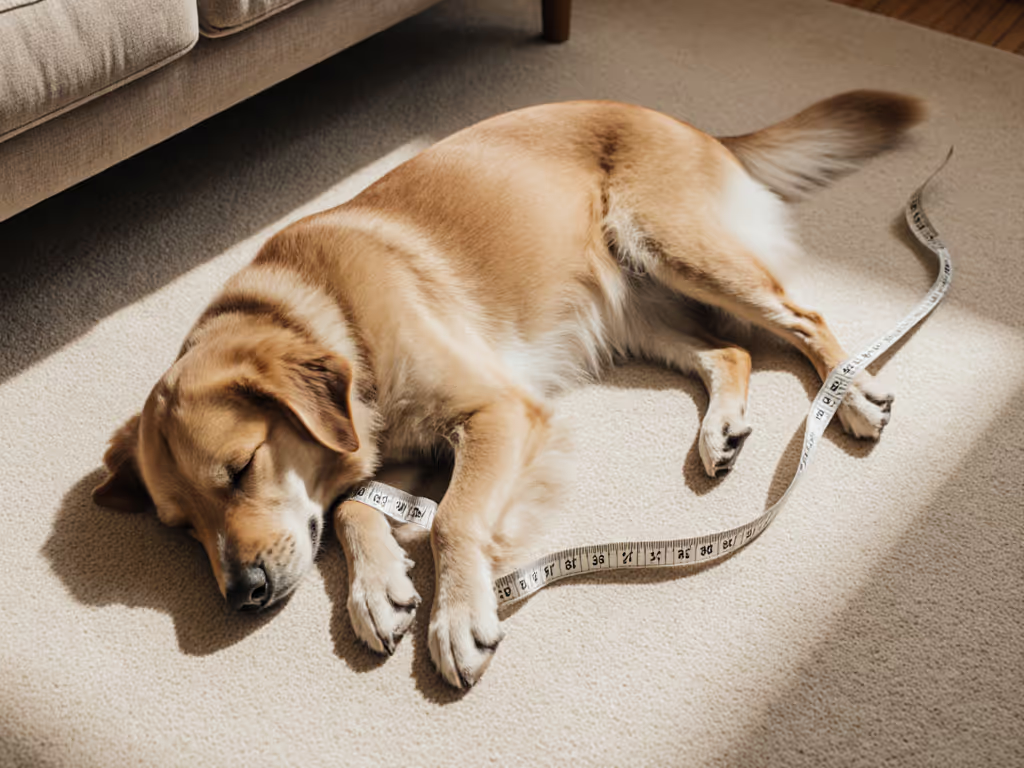
Step 3: Width Assessment
Don't skip this! A burrowing breed like a Dachshund might need significantly more width than length. Measure across their widest point when sleeping (usually shoulders or hips) while they're relaxed. Sprawlers can require 1.5x their shoulder width.
Pro Tip: Place a large sheet of paper under your sleeping dog and trace their outline. This creates a perfect template for sizing.
Translating Measurements to Bed Dimensions
Now that you have accurate metrics, here's how to decode manufacturer charts, because "Large" means wildly different things across brands. Consider these often-overlooked factors:
Internal vs. External Dimensions
- Barney Bed's Large measures 45" external but only 33" usable internal length
- Kuranda's Large offers 40" sleeping surface but requires 4" for leg clearance
- Barc London's Medium provides 51cm "rough sleeping space" versus 85cm total length
For best dog bed for large dogs, remember: If your measurement is 36", a bed labeled "fits up to 38"" might actually be too small if bolsters reduce usable space. Always check the internal sleeping area, not external frame size.
Sleep Style Adjustments
| Sleep Style | Length Adjustment | Width Consideration |
|---|---|---|
| Tight Curler | Subtract 4-6" | Standard width |
| Side Sleeper | Match measurement | Add 4-6" for shoulder support |
| Full Sprawler | Add 6-10" | 1.5x shoulder width |
| Burrower | Match measurement | Depth matters more than width |
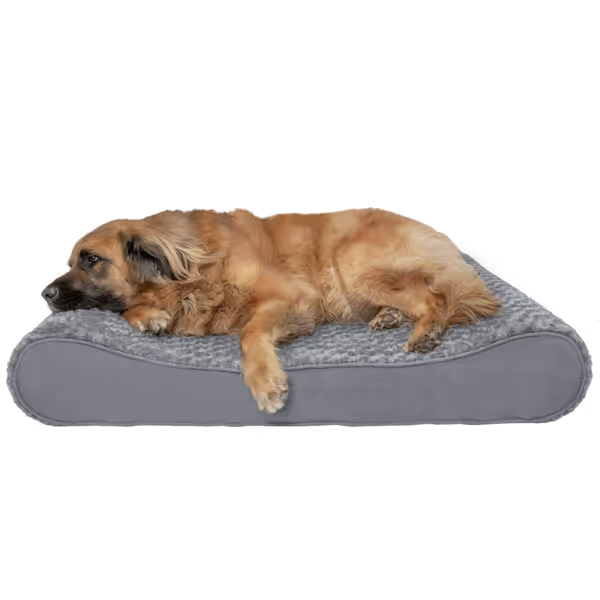
Furhaven Orthopedic XXL Luxe Lounger Dog Bed
Take the Furhaven Contour Bed as an example, it lists 51" length but the sloped edges create a shorter usable sleeping zone. For a 42" nose-to-tail senior Labrador who sprawls, this Jumbo Plus size works only because the open design accommodates stretched limbs. Many owners mistakenly buy based on external dimensions alone, then wonder why their dog sleeps on the floor beside it.
Beyond Dimensions: The Alignment Equation
Correct size is just step one. A bed that fits perfectly but ignores temperature balance will still get rejected. Watch for these signs your properly sized bed misses the mark:
- Cool-seeking behavior: Panting on the bed, frequent position changes, or avoiding the bed in warmer months
- Heat retention issues: Your dog only uses the bed in winter or digs obsessively before settling
- Edge avoidance: Hesitation to fully enter the bed, sleeping only on the closest edge
Body-aware selection means matching:
- Firmness to weight distribution: Larger breeds need higher-density foam to prevent "bottoming out"
- Airflow to climate: Dogs with thick coats require 20-30% more ventilation than fine-haired breeds
- Bolster height to sleeping posture: Side sleepers need support at shoulder height, not head height
Your Actionable Next Step
Tonight, observe your dog's sleeping posture with a flashlight (so you don't disturb them). Take measurements directly on their sleeping form, noting:
- Exact nose-to-tail length
- Widest point when relaxed
- Any leaning or burrowing tendencies
Then visit one retailer with a clear puppy bed sizing guide or dog bed measurement tips that discloses internal dimensions, not just breed recommendations. Cross-reference your measurements against their actual sleeping surface data. If your senior Golden Retriever measures 34" nose-to-tail as a sprawler, you'll likely need a Large bed despite breed charts suggesting Medium.
Real comfort begins not with the label's promise, but with honoring your dog's unique sleep language. Watch how they move, measure with precision, and choose based on what your dog actually does, not what marketing tells you they should. That's how you transform a bed from ignored furniture into their cherished sanctuary.



